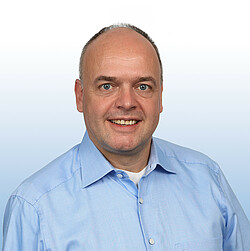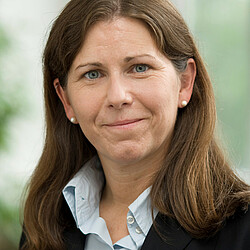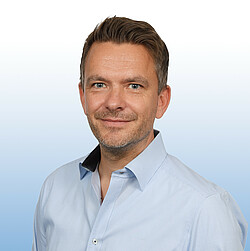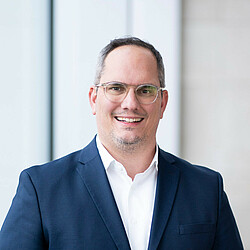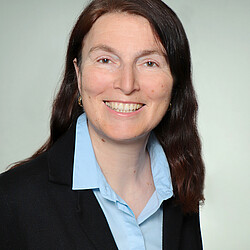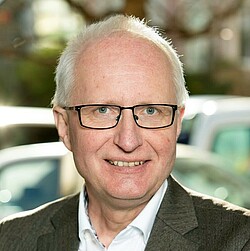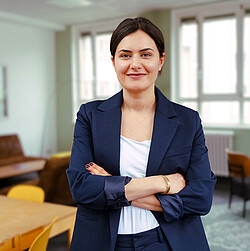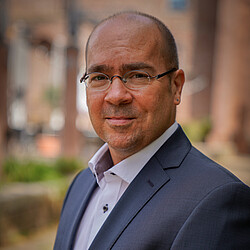Long planned and now largely assigned to its new purpose: The construction of our Building C has made significant progress since the groundbreaking in November 2019 and has been largely ready for occupancy since February 2024. With three floors and an area of 45 x 125 m, the new building has a usable area of almost 14,000m2 and already offers space for the university's four departments and service facilities such as the Student Service Center, the Bafög Office and the International Office. The new building also has numerous lectures, education and group work rooms for students. The new library on the ground floor of the new building opens its doors in May and brings together the previous library rooms of the B building and the Department of Social and Health Sciences in Maxstraße. A spacious canteen and cafeteria will also be located on the ground floor of the new building and will provide students, education staff, employees and external guests with culinary delights from the winter semester 2024/2025 at the latest. The outdoor area between the existing buildings A and B and the newly constructed building C is also visibly taking shape: Numerous new plantings and stonework already give an idea that a beautifully designed outdoor area is being created here, inviting people to linger and work in the shade of the trees.
"The new building is a huge step for the university and we are very happy about it. The building and the associated transformation of the site into a central science quarter will not only bring us synergy effects in the areas of administration, education and research, but will also allow us to bring together the university facilities that were previously scattered around the city in one place. At last we have a campus in the true sense of the word, a campus as a social place with a high quality of stay for all activities of student life, with space for interdisciplinary meetings, spontaneous communication or the combination of work, study and relaxation breaks," says a delighted university president Prof. Dr. Gunther Piller. His special thanks naturally go to the Rhineland-Palatinate state government and the Ministries of Finance and Science for approving and supporting this major project.
Carolin Nöhrbaß, who as Chancellor has been involved in the construction of the new building for many years, is also pleased and relieved that the new building is now operational: "The delays in the planning, the actual construction and the handover to the university have cost us a lot of time, nerves and energy, but the result is great and I am very pleased with the wonderful new building and the beautiful outdoor area," says the Chancellor, emphasizing: "Without our strong facility management team led by our architect and FM manager Sven Fechner and without our very dedicated IT team, it would not have been possible to manage the move, which was actually planned during the last semester break, in just a few weeks before the start of lectures. Many thanks for that!" The university management would of course also like to thank the LBB and the architecture firm agn, as well as their predecessors in office, Presidents Prof. Dr. Wolfgang Anders and Prof. Dr. Peter Mudra and Chancellor Klaus Eisold, who got the project off the ground. "But all employees have also responded to the challenges of the move with commitment and flexibility in a wide variety of areas," said the Chancellor.
ES WIRD, ICH WEISS - ICH WEISS, ES WIRD: The new building is crowned on the roof by the lettering "ES WIRD" ("We’re getting there"), visible from afar, almost 4 m high and 22 m wide, completed by the word unit "ICH WEISS" ("I know") opposite the library at the Passerelle, which connects the new student parking lot with the campus. Together, the two letterings by Berlin conceptual artist Adib Fricke form a work of art inspired by the Ludwigshafen philosopher Ernst Bloch and his main work "Prinzip Hoffnung" (Principle of Hope). It shows the extent to which our actions are accompanied by hope and trust in the future. The pair of words has already become a common phrase among members of the university.
Statements about our new building
Figures & Facts
Design of the new building
The new building cube covers an area of 45 x 125 meters and has three floors. The first floor is divided into the northern library and lecture hall wing and the southern canteen/cafeteria and kitchen wing. Adjacent to the library with 1,981m2 of usable space is a lecture hall with 148 seats. The new canteen/cafeteria is designed for 1,500 meals per day with 536 seats. The two upper floors also house lecture halls, offices, seminar and event rooms, language laboratories, dean's office administration, service rooms for students and the computer center. A green area of 17 percent, in this case 6,000m2, will be created on the site. The central campus square, planned as a communication and recreation area, will be shaded by a densely planted grove of trees. Around 150 trees and 100 large shrubs will be newly planted. The circulation and outdoor areas are greened with grasses, ground cover, small shrubs and lawns. In addition, 243 additional parking spaces will provide around 400 parking spaces in future.
Modern energy concept
The new building is characterized by highly efficient insulation of the roof and walls and the modern district heating system. The photovoltaic system installed on the flat roof with an output of 46 KWp (kilowatt peak) also contributes to the building's energy supply with climate-friendly electricity. Energy-efficient construction and a healthy indoor climate are achieved through the use of mineral plaster and emission-free wall paints, carpet and rubber floor coverings, among other things. The entire building is equipped with daylight and presence-dependent LED lighting. In terms of thermal insulation, the new building will be 15 percent more effective than required by the German Energy Saving Ordinance EnEV 2016.
Client and project partner
The client for all of the above construction measures is the Rhineland-Palatinate Ministry of Finance, represented by the Landau branch of the Landesbetrieb Liegenschafts- und Baubetreuung (LBB). The overall project is estimated to cost 67 million euros in the state budget. In addition to the lead architect's office agn, a further 24 planners, engineers and experts are involved in the overall design of the complex building. For the structural implementation, 56 trades are being put out to tender across Europe.
Building data at a glance:
- Usable area: new building 14,000 m², total: 22,885 m²
- Total construction costs: 67 million euros
- Start of construction (new building): September 2019
- Ground-breaking ceremony: November 8, 2019
- Completion (new building): December 2022
Project management
Michaela Sattel, LBB Landau branch office
Project management
Gudrun Biesenbach, LBB Landau branch office
Project management
HWP Planungsgesellschaft mbH, Stuttgart
Design and implementation planning
agn Niederberghaus & Partner GmbH, Ibbenbüren
Structural engineering
Horn + Horn, Ingenieurbüro für Bauwesen GbR, Neumünster
Ingenieurbüro Gerhard Wirth, Landau (inspection)
TGA planning
Ingenieurbüro i4e GmbH, Lebach (electrical)
IBP Ingenieurgesellschaft mbH, Völklingen (HLS)
Ingenieurbüro Schaller, Karlsruhe (kitchen technology)
Civil engineering
Schüßler-Plan Ingenieurgesellschaft mbH, Frankfurt/Main
Outdoor facilities
Olschewski LandschaftsArchitekten, Ludwigshafen
Health and safety coordination
GefAS mbH, Ludwigshafen
Fire protection experts
Endreß Ingenieurgesellschaft mbH, Ludwigshafen
Soil remediation
ARCADIS Deutschland GmbH, Karlsruhe
Review
Ground-breaking ceremony in November 2019
On 8 November 2019, HWG LU celebrated the ground-breaking ceremony for the new construction of the future Building C. Science Minister Prof. Dr. Konrad Wolf, Ludwigshafen's Lord Mayor Jutta Steinruck, State Secretary of Finance Dr. Stephan vineyard and LBB Managing Director Holger Basten acknowledged this milestone in the development of Ludwigshafen University with their welcoming speeches.
Pictured on the far left (from left to right): Vice President Edith Rüger-Muck, Lord Mayor Jutta Steinruck, Chancellor (m.d.W.d.G.b) Carolin Nöhrbaß, Science Minister Konrad Wolf, University President Peter Mudra, State Secretary Stephan Vineyard, LBB Managing Director Holger Basten and local leader Anke Simon (MdL). (Image: HWG LU)
At the ground-breaking ceremony in 2019, then university president Prof. Dr. Peter Mudra commented on the significance of the new building for HWG LU: "Once the new building is completed, the conditions for students, teaching staff and employees will be significantly improved and there will be a joint campus for the first time - an important step, also in the context of the merger of the two previously independent universities of applied sciences in Ludwigshafen in 2008, and a milestone in the development of the Ludwigshafen University of Business and Society!"
Pictures 2-4 show construction progress in September 2020 and May 2021 as well as the development of the new outdoor area in spring 2024.








